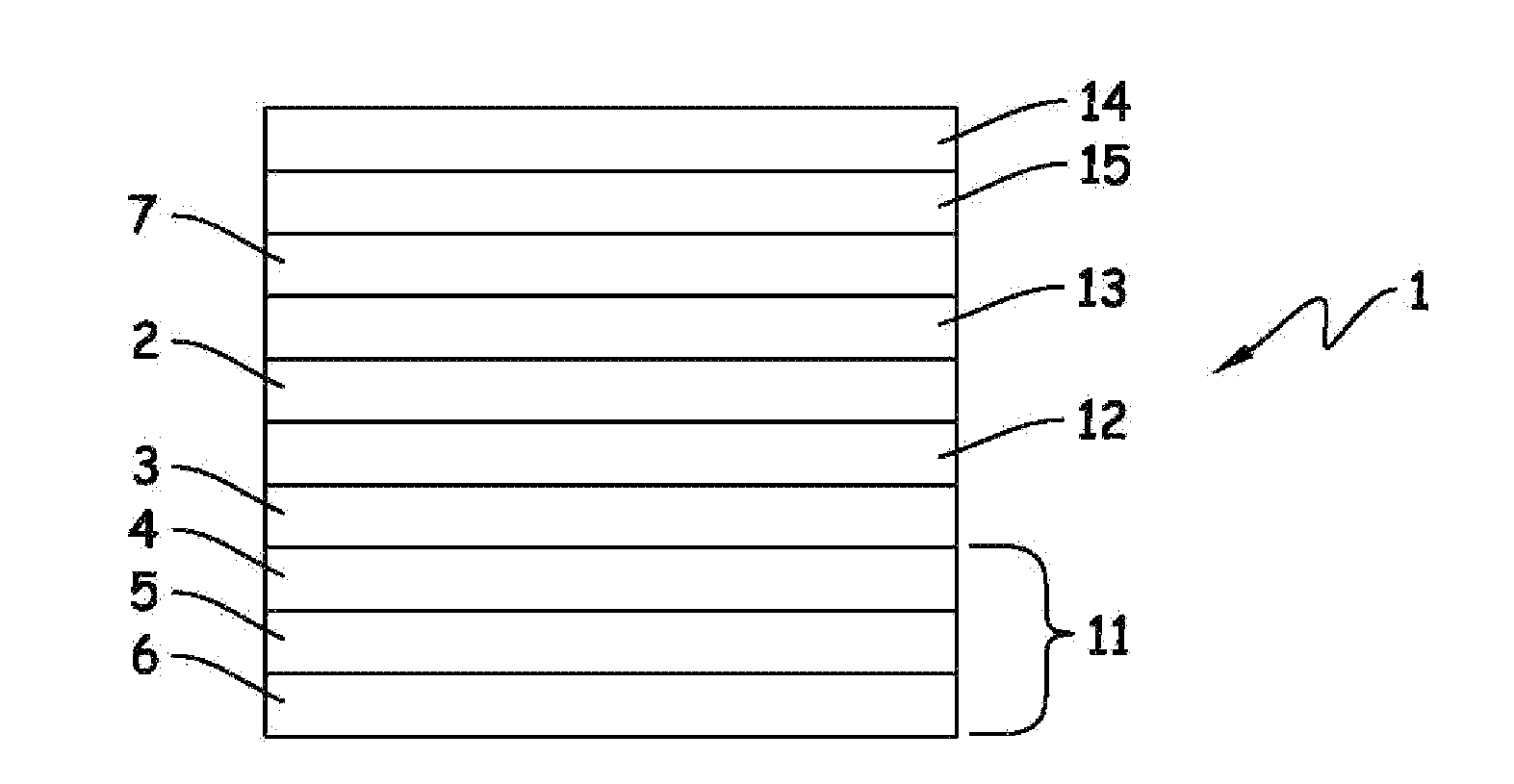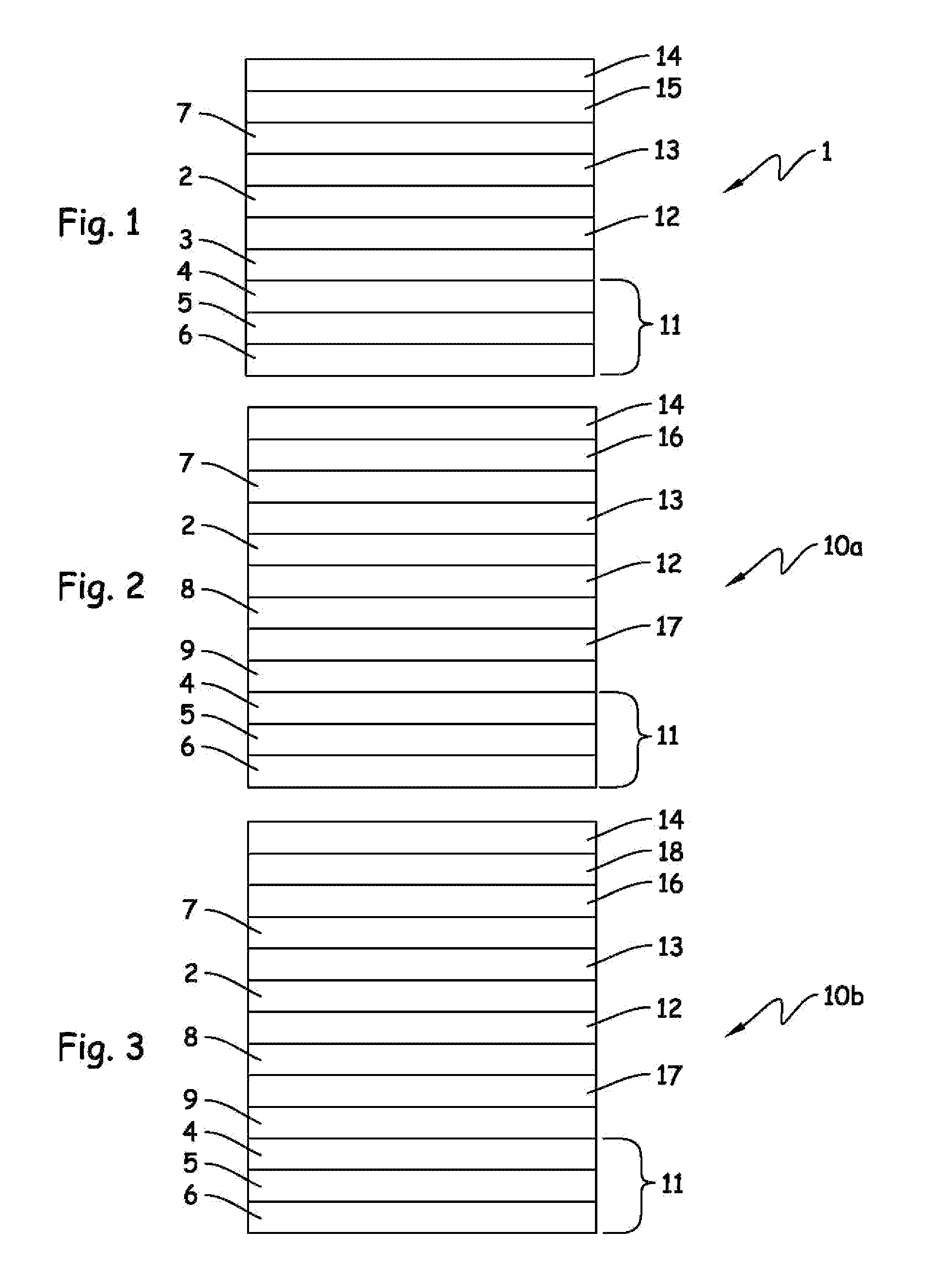Flexible photovoltaic articles
- Summary
- Abstract
- Description
- Claims
- Application Information
AI Technical Summary
Benefits of technology
Problems solved by technology
Method used
Image
Examples
example 1
[0051]Three sets of samples corresponding to FIGS. 1, 2 and 3 are prepared using the following materials:[0052]Top stress relieving layer 16: 30 mil (762 microns) DNP Z68 poly(ethylene-co-vinyltrimethoxysilane) copolymer from Dai Nippon Printing Company.[0053]Optional top protective layer 18: 30 mil (762 microns) thick available as Zeonor 1600 from Zeon Chemicals.[0054]Backside stress relieving layer 17: 12.5 mil (318 microns) thick Mylar polyethylene terephthalate sheet available from Tekra Corporation.[0055]Topside protective layer 14: 2 mil (51 micron) thick film of poly(ethylene-co-tetrafluoroethylene) available from Asahi Glass Company.[0056]Microglass is a 0.2 mm thick glass available from Corning Inc. The adhesive and encapsulant layers, 2, 5, and 7, are a 15 mil (381 microns)_thick film of DNP Z68 poly(ethylene-co-vinyltrimethoxysilane) copolymer available from Dai Nippon Printing Company. Layers 8 and 9 are the same material with a thickness of 7.5 mil (191 microns).[0057]T...
example 2
[0064]The benefits of the inventive structure are further verified by modeling using finite element analysis the stresses generated in the microglass and solar cell layers of the structures of FIGS. 1-3. The maximum stresses generated in microglass and CIGS cell layers are listed below and in Table 2 for each design. It is clear that the addition of backside stress reliving layer reduces the maximum stresses generated in both microglass and CIGS cell layers. Further reduction in stresses is achieved by adding the top side stress relieving layer. This lowering of stresses is hypothesized to be responsible for the higher impact resistance of microglass and CIGS cells.
The details (thickness, Young's modulus and Poisson's ratio) of the various layers in the FEA model of FIG. 1 are as follows:[0065]Layer 14: thickness of 2 mils (50.8 microns), Youngs modulus of 330 MPa, Poisson's ratio of 0.33[0066]Layer 15: thickness of 30 mils (762 microns), Youngs modulus of 53.7 MPa, Poisson's ratio ...
PUM
| Property | Measurement | Unit |
|---|---|---|
| Fraction | aaaaa | aaaaa |
| Fraction | aaaaa | aaaaa |
| Thickness | aaaaa | aaaaa |
Abstract
Description
Claims
Application Information
 Login to View More
Login to View More - R&D
- Intellectual Property
- Life Sciences
- Materials
- Tech Scout
- Unparalleled Data Quality
- Higher Quality Content
- 60% Fewer Hallucinations
Browse by: Latest US Patents, China's latest patents, Technical Efficacy Thesaurus, Application Domain, Technology Topic, Popular Technical Reports.
© 2025 PatSnap. All rights reserved.Legal|Privacy policy|Modern Slavery Act Transparency Statement|Sitemap|About US| Contact US: help@patsnap.com


